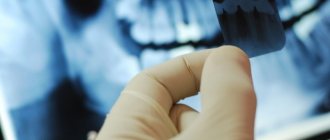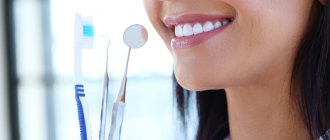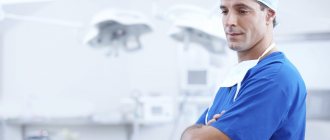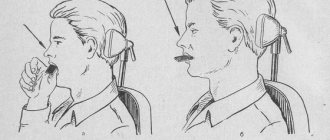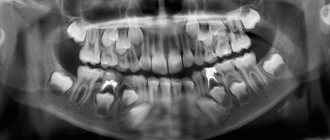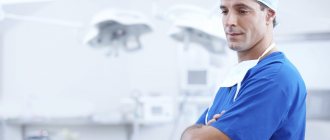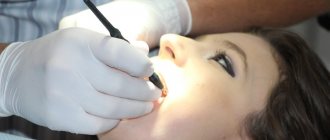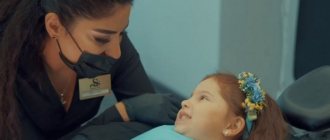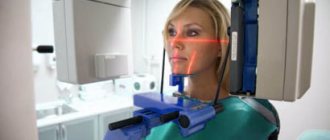February 3, 2020
Today, any self-respecting dentist sends the patient for an X-ray of the oral cavity even before treatment begins - to make an accurate diagnosis. Scientifically speaking, doctors conduct an X-ray examination, thanks to which it is possible to identify problems hidden from view, provide high-quality treatment and eliminate serious errors and complications. However, there are different types and methods of x-rays, the study can be carried out using different devices - the patient needs to have at least a general understanding of all this in order to understand what nuances and features exist and when it is more appropriate to take which pictures. And the editors of the UltraSmile.ru portal will help you understand this topic.
There are several types of radiography in dentistry
Why is radiography performed?
Why do X-rays take place? Quite often, a visual examination and patient complaints are not enough to make an accurate diagnosis, and then errors cannot be ruled out. Modern dentistry strives to avoid any mistakes, and X-ray diagnostics are a great help for this. With the help of an examination, you can identify serious contraindications to certain treatment methods, monitor the treatment process, detect hidden pathological processes and injuries (for example, a root fracture or crack), and assess the condition of the bone tissue before implantation.
Radiography is prescribed in any field of dentistry: orthodontics, orthopedics, therapeutic and surgical areas. However, for each individual situation, different research methods based on the action of X-ray radiation will be considered the most effective. Let's look at all that exist today.
Sight shot
With this type of study, a general photograph of the oral cavity is not taken; the image captures only the area of one or several teeth. The picture shows their root system, the condition of the canals and the bone tissue surrounding the tooth, as well as the gums. An indication for a targeted image is, for example, the presence of caries or pulpitis.
The study is performed using a device called a visiograph. This equipment allows you to obtain a two-dimensional flat image.
The procedure is carried out as follows: the patient is given a lead apron and seated on a chair next to the device. A sensor, which is wrapped in film, is applied to the diseased tooth. It must be held in the mouth, pressed against the tooth and gum with a finger, for about 10-20 seconds. Done – the pictures are taken. The doctor can only process them on a computer, after which they can be sent to print or saved in a special program for viewing.
The image captures only the area of one or more teeth
The study is also called intraoral, but it is important to understand that a targeted shot is the most popular, but not the only method of intraoral radiography. There are others:
- interproximal: allows you to study the crown of a certain tooth in detail, identify hidden processes under a filling or on supporting teeth under fixed artificial orthopedic structures (bridges, crowns),
- occlusal or in bite: this is an addition to the targeted photograph in cases where it does not give a clear idea of the processes occurring in the desired area. Allows you to obtain an image over 4 teeth, to clarify the features of the pathological process on impacted teeth or in the area of cystic formation. This type of study is also indicated for patients with an increased gag reflex or impaired mouth opening,
- shooting with parallel beams or long-focus: it allows one to assess the condition of the bone tissue structure and identify signs of periodontal disease.
Cost – from 250 rubles for 1 photo.
How is x-ray examination (dental x-ray) performed?
- The study can only be done in an X-ray room specially equipped for this purpose;
- The patient must remove all metal jewelry, removable plates, and piercings from the head;
- If you need a picture of one or more teeth, a radiologist places the visiograph sensor against a specific area;
- 3D scanning occurs using a rotating module (it is important to sit still);
- All images are immediately transferred to the computer;
- The duration of the study is only a couple of minutes.
Panoramic image
Now let's talk about a panoramic image of the teeth (orthopantomogram or OPTG for short). What it is? This is a type of two-dimensional x-ray examination that is performed on an orthopantomograph or computed tomograph. As a result, the doctor receives a cross-sectional image of not 1-2 teeth, but the entire jaw.
This type of study allows you to get a general picture of the entire jaw
“At one of my appointments in private dentistry, I had a panoramic dental x-ray taken when I came for a consultation about the removal of one tooth. Before that, I only went to a public clinic; they never even offered this. After that, the doctor sat me down next to me and showed me the condition of all my teeth on computer images and gave me a very detailed consultation. I liked that for the first time I saw my wisdom teeth in the pictures, two of which I didn’t even know about, because... they are under the bone and have not yet erupted, but the doctor immediately said that they would have to be removed, because... they grow into the cheek, as I was again clearly convinced of. This is how far progress has come!!”
Julia, review from yell.ru
This type of study allows you to get a general picture of the entire jaw system; it is used when planning orthodontic treatment, to assess the condition of the oral cavity at the initial stage of preparation for dental implantation, and during dental prosthetics.
The answer to the question of how to take a panoramic photograph of teeth is in a feature article on the website.
The cost of 1 photo is from 800 rubles.
Diagnostics in dentistry
The success of dental treatment depends on a correct assessment of the clinical picture (manifestations and characteristics of the course of the disease) and, accordingly, the accuracy of the diagnosis. To do this, a diagnostic examination is required. Based on its results, the doctor selects the optimal treatment tactics for the patient and draws up a treatment plan.
If the problem lies on the surface, the doctor can immediately begin treatment (for example, removing tartar or filling a carious cavity). But if there is doubt about the diagnosis, additional diagnostic measures are required - x-ray examination.
About the safety of digital X-ray examinations
The maximum permissible dose of radiation received per year is 50 thousand μSv. This conclusion was reached by the American Nuclear Regulatory Commission together with the Environmental Protection Agency.
The maximum radiation exposure of one targeted image is 4 μSv, panoramic - 26 μSv, a full set of targeted images (whole mouth) is 88 μSv. To get 50 thousand μSv per year, you need to take 34 pictures per day. This comparison eloquently demonstrates that the radiation dose received during diagnostics is negligible
.
X-ray diagnostics at GUTA CLINIC
X-ray diagnostics at GUTA CLINIC are performed using high-precision equipment ORTHOPHOS XG
, providing quality 2D and 3D shooting. With this system we get clear images of teeth, jaws and nasal cavities. The photographs can be viewed in detail on a computer, conveniently stored on any digital medium, and, if necessary, printed.
The radiation exposure to the body when using the ORTHOPHOS XG system is three times less than that of a film device.
A highly qualified dentist will interpret the results of your x-ray. After analyzing the images, the doctor will tell you about possible treatment options and suggest the best one for your case.
Diagnostic methods at GUTA CLINIC
Visual examination of the oral cavity
during consultation – this is the primary diagnosis. As part of a visual examination, the dentist uses three methods in combination: palpation (palpation), percussion (tapping) and probing.
During the initial diagnosis it is possible to identify:
- abnormalities in the position of teeth;
- visible dental problems (caries, tartar, plaque, chips, cracks, periodontitis, etc.);
- non-carious enamel lesions.
Examination using a Carl Zeiss dental microscope
allows you to identify problems invisible to the naked eye: caries at the spot stage, microcracks in the enamel and hidden carious cavities.
CEREC AC system with Omnicam camera
to create digital impressions will allow the dentist to see the planned result of the work in 3D format, which will facilitate the choice of treatment tactics.
X-ray diagnostic methods
X-ray examinations are as informative as possible when examining soft and hard tissues of the oral cavity. Depending on the results of the initial examination, the dentist will choose one or another method of x-ray diagnostics:
- targeted photograph of teeth;
- OPTG (panoramic X-ray) of the dentition;
- CT (computed tomography).
All research methods are safe, carried out quickly and painlessly.
Sight shot of teeth
A targeted image is a digital image of 1 to 3 teeth and surrounding tissues.
In what situation is diagnostics necessary?
Such research is indispensable in making a diagnosis and monitoring the process and quality of treatment of dental and periodontal diseases.
How is the research conducted?
The shooting is carried out using a digital device - a radiovisiograph. To obtain an image, the dentist directs an X-ray tube with a sensor to the diseased tooth and turns on the device. The received data is transferred to the computer.
What can be revealed from a targeted image?
- Pathologies of the coronal part of the tooth
- Carious inflammation of varying degrees
- Inflammatory processes under crowns and fillings
- Condition of bone and dentin tissues
- Correct installation of crowns and dentures
Panoramic photograph (OPTG) of the dentition
Orthopantomogram (OPTG) is a diagnostic procedure that allows you to obtain an overview image of the entire oral cavity.
In what situation is diagnostics necessary?
As a rule, a complete picture of the condition of the oral cavity is needed at the preparatory stage of implantation, when selecting a method of orthodontic treatment and in the treatment of periodontitis and periodontal disease.
How is the research conducted?
A panoramic photograph is obtained by rotating the orthopantomograph around the head. The device “reads” information using a sensor in less than a minute. You must remain motionless throughout the entire procedure.
What can be revealed from a panoramic image?
- Cystic formations
- Damage to tooth roots
- Foci of caries
- Impacted (unerupted or incompletely erupted) teeth
- Diseases of the jaw joints and maxillary sinuses
- Inflammation of periodontal tissues
- Inflammation of bone tissue
CT of the oral cavity
Computed tomography (CT) of the oral cavity is an x-ray examination that allows you to obtain a three-dimensional image of the musculoskeletal system. 3D photographs are highly clear and informative.
In what situation is diagnostics necessary?
This study is prescribed at the stage of preparation for implantation and prosthetics.
How is the research conducted?
Before tomography, you must remove all jewelry and remove orthopedic structures with metal elements from your mouth. You must remain motionless while the device's sensor rotates around the area being examined. The procedure takes about a minute.8
What can be revealed from a panoramic image?
- Condition of fillings and crowns
- Pathologies of hard and soft tissues
- Injuries
- Carious formations
- Arthritis of the temporomandibular joint
To receive comprehensive information about the condition of your teeth and an effective solution to a dental problem based on modern diagnostics, make an appointment with a GUTA CLINIC dentist.
Electroradiography
In another way, this image of the oral cavity is also called xeroradiography. This is a complementary test that is most commonly used in orthodontics, but is also quite effective in detecting bone lesions and soft tissue lesions.
In electroradiography, the image is printed on paper.
Electroradiography images are obtained by passing x-rays through a selenium plate (it is used instead of x-ray film). Next, the image is developed on paper. At the moment, the method is rarely used, for narrow indications.
Teleradiography (cephalometry or TRG)
Using this type of examination, doctors can obtain two-dimensional panoramic images of the entire skull in a lateral or frontal projection in real dimensions.
Lateral teleradiography is used in orthodontics, because with its help the doctor can very well assess the size of the upper and lower jaw, identify the inclination and position of the teeth, study the patient’s profile and determine the type of jaw growth.
This type of study allows you to obtain two-dimensional panoramic images of the entire skull
TRG in frontal projection can be used in orthopedics and implantology. The resulting images also allow you to assess the condition of the sinuses and mucous membranes.
The cost of 1 photo is from 700 rubles.
What is included in a clinical examination?
After interviewing the patient, a clinical examination is prescribed using special devices and equipment. These methods allow you to study the anomaly in detail and completely recreate the full picture of the pathology.
Do you want to know what an orthodontist treats? Read our new publication.
In this article we will discuss whether myogymnastics for the face is effective.
Here https://orto-info.ru/zubocheliustnye-anomalii/okklyuzii/pravilnyiy-prikus-u-cheloveka-raznovidnosti-i-foto.html we have collected photos of what a correct bite looks like in a person.
X-ray
X-ray examination is used in dentistry to study the structure and condition of the bone tissue of the jaw and teeth. It allows you to build a competent treatment plan and predict its results.
For radiological diagnosis of dentofacial anomalies, the following radiological methods :
- Dental radiography. Refers to the intraoral diagnostic method, which is carried out using a special apparatus in the form of a tube, which is brought up to a distance of 5 cm from the cheek and a projection is made at a right angle.
Using this device, you can identify the abnormal location of the roots of the teeth, changes in bone and periodontal tissue, determine the presence of tooth buds and the stage of their formation.The only drawback of the technique is its limited localization. The device allows you to take clear pictures of only 2-3 teeth and no more.
- X-ray of the palatal suture . Necessary to determine the degree of ossification and structure of the palatal suture. To do this, use a device with close-focus shooting capabilities.
- Tomography of the temporomandibular joint . Necessary to determine the ratio of these elements in the treatment of malocclusion. It is carried out using a dental x-ray machine.
- Orthopantomography . Allows you to obtain a panoramic image of the problem jaw with a detailed image of each element.
Using models
One of the mandatory diagnostic methods for orthodontic treatment is examination using diagnostic models . This method consists of taking impressions from both jaws of patients and making control working models based on them.
To give the models precise occlusion, it is registered using a heated wax plate. In the future, this plate is used to accurately model the jaw relationship.
What analysis methods are used when studying diagnostic models, watch the video:
Simulation allows you to choose the right method of hardware treatment. Let's look at some of them.
Functional
Functional methods include methods for detecting chewing tests and determining the degree of functionality of various muscle groups .
In orthodontic practice, the following methods are used for this:
- Masticationography. Allows you to accurately determine the type of bite by the degree of participation of certain muscles of the lower jaw in closure and lateral movements. For this purpose, a pulse-type device is used, which records the received data in the form of a curve.
The work of the muscles is judged by its deviation. The device is an elastic balloon that is attached to the lower part of the chin.When the mouth opens and closes, it responds to movement and transmits impulses to the kymograph.
- Graphic accounting. Allows you to determine the activity of the mandibular muscles during chewing. Just like in the previous version, the same apparatus is used, which displays the results in the form of a curve.
When the jaw is lowered, the rubber balloon contracts, causing the scribe to rise. The more the jaw participates in the movements, the higher the level of the curve.If there is no pressure, the scribe goes down. During immobility, the scribe produces a straight line. When diagnosing, pay attention to the wave transition angle and its maximum value.
- Electromyography. It is a study of the excitation potential of muscle fibers using a multichannel electromyograph.
The device allows you to determine the functionality of the muscular system of the jaw at rest, during excessive and natural tension.To do this, electrodes are fixed to the area being examined, through which current is applied to the muscles.
Craniometric
If the methods listed above are diagnostics, mainly based on morphological characteristics, then craniometric ones make it possible to determine malocclusion using the ratio of the proportions of the facial region and the upper part of the head to the planes of the jaw.
Mask model
It is used to accurately determine facial asymmetry, taking into account three planes mutually perpendicular to each other . The planes used are the tragus, the medial line running along the palatal suture, and the frontal plane.
To determine asymmetry, a glass cube was initially constructed with a mask model fixed in it. The mask was made according to facial proportion standards. During diagnostics, the horizontal plane must coincide with the surface of the cube.
Based on the discrepancy between the dentofacial apparatus and the other edges, an anomaly is judged, which is localized along a line asymmetrical to the plane.
Gnatostatdevice
This device is a further development of the mask model, which turned out to be very bulky and inconvenient to use. Subsequently, the cube with the mask was replaced with a special device - a gnathoscope.
It is used to determine a horizontal line that runs along the line of the eyes. The median one is localized in the area of the palatine suture, and the frontal one runs along the central part of the face. The device consists of an impression tray, a metal rod and several movable arrows.
The device is fixed using movable arrows, defining the main planes with them.
Deviation in the area of the median plane indicates asymmetry in the transversal plane, and deviation along the horizontal line indicates prognathism and sagittal asymmetry.
If the upper canines are located in front or behind the horizontal plane, then this is considered a deviation. The narrowing or widening of the jaw is determined by the midline. The vertical line reveals the degree of occlusion displacement.
We will tell you how the bite is determined during edentia in the next review.
Our next article is about the pros and cons of using orthodontic trainers for children.
At the link https://orto-info.ru/sistemyi-vyiravnivaniya-zubov/breketyi/rezultatyi-lecheniya-foto-do-i-posle.html we have posted a selection of photos of how the face changes after wearing braces.
Photostat
With this method, the diagnosis of deviations in the development of the dentofacial apparatus is revealed using photography . For this purpose, a Simon photostat is used, in front of which the patient's head is fixed motionless.
Before shooting, control points are marked, which are the orbital line, ear points, and the lower corner of the jaw. The device has internal on-screen markings of asymmetry measurement planes, which are aligned with the marked points.
Using the finished image, a possible deviation is determined.
Diagnosis is carried out not only by three planes, but also by the angle of the jaw. The deviation of this indicator upward or downward is evidence of the presence of prognathia or progeny.
Teleradiography
It is the most revealing and informational research method. It is an X-ray image of the patient's profile, which displays the skeleton, its structure and the contours of the soft tissues.
The procedure is carried out using X-ray equipment placed at a distance of no more than 1.5 m from the head. In this case, the X-ray film should be pressed as tightly as possible.
For accurate design, it is recommended to apply approximate plane lines to the film.
Based on teleradiography data, the relationship between the bases of the upper and lower jaw is judged. The study also allows us to identify the inclination of the teeth in relation to the base of the skull and the general row.
Contrasting types of research
There are contrast radiological types of studies: arthrography, angiography, sialography, dacryocystography. They are worth mentioning separately, because... To obtain data on the condition of the maxillofacial apparatus and oral cavity, doctors inject a water-soluble contrast agent with iodine into the patient’s body.
During a contrast study, doctors inject a contrast drug with iodine into the patient's body.
Until recently, the methods were actively used in dental practice; now this happens much less frequently, because they are quite labor-intensive and even uncomfortable, painful for the patient, and some require anesthesia. In addition, these methods have contraindications (for example, iodine intolerance), as well as narrow indications. Thus, sialography is used to determine the condition of the salivary glands and in cases of suspected salivary stone disease.
CT scan
To conduct a computed tomography, or CT for short, you need a machine called a tomograph. Compared to all the previously listed research methods, computed tomography is a volumetric, three-dimensional or 3D image of the oral cavity. Due to the “volume”, the doctor has the opportunity to see the necessary areas in more detail and even layer by layer, which increases the effectiveness of treatment and reduces the likelihood of errors, relapses and complications. In addition, CT reduces the time spent on examining each patient and reduces the total radiation exposure, which allows the technique to be used even in pediatric dentistry1.
Computed tomography produces a three-dimensional image of the jaw
Computed tomography is prescribed before complex surgical interventions; it is required before and after dental implantation. Especially when a comprehensive restoration of all teeth on one or both jaws is expected. This is important for every patient to know, because... even today there are clinics where, instead of CT in such situations, they perform OPTG, which is less informative and may not give an idea of all the nuances and features of the structure of your jaw system.
Computed tomography is mandatory before complex dental implantation, for example, according to protocols with immediate loading. If only 1 tooth is restored, then an orthopantomogram will be sufficient.
The cost of a segment of the dentition is from 1,500 rubles, one jaw – from 3,500 rubles, two jaws – from 5,000 rubles.
Multislice tomography or MSCT
This is the most modern and advanced type of 3D research today, thanks to which very high quality images are obtained. The method allows you to most accurately assess the situation in the oral cavity. To perform MSCT, you need very powerful and expensive equipment; this is not used in dentistry. However, dentists in some cases refer patients to specialized centers to obtain such images. For example, if it is planned to carry out zygomatic implantation using elongated zygomatic implants against the background of acute atrophy of the upper jaw bone.
This type of tomography is the most modern and accurate
Multislice tomography, unlike all the previously listed research methods, is performed not standing, not sitting, but lying down. The patient is placed in a closed space, with the apparatus arch rising above him like a dome. The main contraindication to the study is pronounced claustrophobia.
The photo shows a multislice tomograph
The cost of 1 photo is from 3000 rubles.
As for the cost of different types of research, you need to understand that everything is rarely limited to just one image. For example, if you are restoring teeth with implantation, then diagnostics will have to be done at least at the treatment planning stage, after installing implants and prosthetics, as well as during the rehabilitation process. This measure may seem expensive to many patients, but saving on this particular expense item is not advisable, because radiography is the key to your safety. However, you can reduce costs if you choose clinics that perform dental implantation on a turnkey basis.
Notice
: Undefined variable: post_id in
/home/c/ch75405/public_html/wp-content/themes/UltraSmile/single-item.php
on line
45 Notice
: Undefined variable: full in
/home/c/ch75405/public_html/wp-content /themes/UltraSmile/single-item.php
on line
46
Rate this article:
( 1 ratings, average: 5.00 out of 5)
prevention
- Petrenko K.A. Promising methods of X-ray examination in dentistry. International Journal of Humanities and Sciences, 2016.
Expert “Radiography today is inseparable from modern dentistry, as well as from other areas of medicine. It is constantly being improved, new methods are emerging that significantly improve the quality of service provision. This is a tool that helps patients be more confident in the outcome of treatment, trust the specialist and understand the nuances that the dentist is talking about, because the doctor often uses pictures as visual aids to more clearly explain what the problem is.” Dentist-therapist Elena Vladimirovna Orlova
Consulting specialist
Orlova Elena Vladimirovna
Doctor rating: 9.5 out of 10 (2) Specialization: Dentist-therapist Experience: 33 years
Diagnostics
Diagnostics in orthodontics is a set of activities aimed at obtaining information about the problem of a particular patient, for the purpose of its further analysis and comprehension, in order to select adequate measures to solve (eliminate) this problem.
After all, if you don’t know where and why you are going (literally, what you are treating, what goal you are pursuing), you can easily get lost.
And in this regard, the importance of diagnostics in planning and implementing successful orthodontic treatment can hardly be overestimated.
After all, orthodontic diagnostics is designed to identify those clear guidelines that the doctor should rely on when drawing up a treatment plan. And first of all, the cause of the bite problem (anomaly).
Competent diagnostics should be built according to the principle of a funnel. When at the first stages of the survey general questions are resolved, and at subsequent stages these questions are more and more specified (narrowed, clarified).
This achieves the greatest “targeting” in identifying (and therefore further eliminating) the cause of the dentofacial anomaly in each specific case.
What procedures should be included in orthodontic diagnostics?
at the current level of development of orthodontics, with a modern view of occlusion?
I would probably divide them into
general , or in other words, mandatory (constituting a wider part of the “diagnostic funnel”) and additional (clarifying, more narrowly focused), constituting the “spout” (narrower part) of the funnel.
General (mandatory) diagnostics in orthodontics (for any type of hardware treatment).
General (mandatory) diagnostic methods include :
Examination and interview of the patient.
The examination is carried out at the stage of initial consultation (or acquaintance). Allows you to identify key points in terms of the manifestation of dentofacial anomalies in each specific case. And based on these guidelines, build further (additional), more “targeted” diagnostics.
Example: facial asymmetry, incorrect posture (shoulders at different levels, head tilted towards a high shoulder, valgus foot, etc.) identified during the initial examination... All this may indicate a skeletal or cranial cause of improper closure of the teeth (bite).
Or another example: complaints of pain and noise (crunching or clicking) in the area of the temporomandibular joint (TMJ), which are identified (confirmed) upon examination and palpation of the TMJ area, will allow us to suspect dysfunction of this joint. Which, in turn, will oblige us to carry out a more objective (accurate, targeted) diagnosis of the TMJ (in particular, MRI of the TMJ).
Taking impressions, making plaster models, their calculation and analysis.
Allows you to identify the cause of malocclusion at the level of the teeth (dentition) and jaws. For example, find out how narrowed or shortened the dentition is. And also determine the degree (scale) of discrepancy between the sizes of teeth and jaws (see Basic mechanisms of uneven teeth)
And because Since all discrepancies are determined literally “in numbers” (millimeters), this method already belongs to completely objective diagnostic methods.
X-ray studies in orthodontics.
Such as:
a) Orthopantomogram (OPTG) or in other words – panoramic image.
Allows you to determine:
- the number of teeth (in the case when they have not all erupted yet). Often there is an insufficient number of teeth (edentia) or, conversely, an excessive number of them: “extra” (supernumerary) teeth.
- degree of “maturation” of teeth. Which allows you to plan the approximate time of their
teething
- position of the roots of the teeth. Which is very important, for example, for the correct positioning and fixation of braces.
When treating with braces, OPTG is also done during the treatment itself, to control the position and more precise correction of the roots of the teeth. This is very important for the stability of the treatment result.
— monitoring the condition of the bone tissue around the roots of the teeth (identifying hidden foci of infection). And also to control the quality of dental treatment (filling canals, fillings).
b) Teleroentgenogram (TRG, cephalogram) and its analysis (TRG analysis)
For general (mandatory) diagnostics, analysis in lateral projection .
This is perhaps the most important (“key”) image of the primary diagnosis!
It is the analysis of the lateral TRG that makes it possible to identify the causes of malocclusion at the level of the jaws, skull, and cervical spine (i.e., the very root cause of malocclusion is skeletal problems).
For example, to determine which jaw is “to blame” for improper closure of the teeth and what exactly is its “fault” (what is actually broken): size or position (or both). Or determine the angle of inclination (degree of protrusion) of the incisors. Or whether the lateral group of teeth is shifted anteriorly.
Computer analysis of lateral TRG according to Sassouni
And all this is needed to resolve the issue (a very important issue, mind you): treatment should be carried out with or without tooth extraction. And also with or without distalization (backward shift) of the lateral teeth.
In addition, a competent specialist will see on the lateral TRG many indirect (but very important) details that, at first glance, do not seem to be related to the correction of the bite. But this is only at first glance…
1. A “bifurcated” edge of the body or branch of the lower jaw may indicate cranial distortions , a violation of the position ( Roll , Yaw ) of the upper jaw (see Additional diagnostics ), possible dysfunction of the TMJ
2. Smoothed lordosis of the cervical spine may indicate a violation of the position of the jaws (in particular, the distal position of the lower jaw)
3. A high position of the hyoid bone may suggest increased muscle traction (spasm) in the muscles of the suprahyoid region
Taking impressions, OPTG, analysis of plaster models and lateral TRG are the “gold standard” of orthodontic diagnostics.
Regardless of the equipment on which this treatment will be carried out (on braces, plates, aligners, etc.). Simply put, these diagnostic procedures are mandatory elements of diagnostics in orthodontics (well, like a general blood and urine test when visiting a local physician about a cold). Because this “general orthodontic analysis” answers the main question about the cause and level of malocclusion. Those. indicates that ultimately it is necessary to treat. Or where else should we “dig” in terms of additional diagnostics (further clarification of the details of the anomaly).
OK then. This seems to have been sorted out. What does, for example, a local therapist do in a clinic if a general analysis of the patient’s blood and urine reveals abnormalities? That's right - he prescribes additional tests (blood biochemistry or some kind of daily urine test, or something worse). The goal is clear: something (some kind of “bulk”) has been found, it is necessary to clarify what, how, why and why ( what kind of “bulk” is, how and with what it is treated, and other nuances).
It's the same in orthodontics. By the same rules. Remember the “diagnostic funnel” and its purpose.
And if, during a minimal examination (casts, models, OPTG, lateral TRG), deviations from the norm are detected, then additional diagnostic methods . For the same purpose: clarifying the cause or detailing the nuances of a specific bite problem.
Summary:
— Taking impressions, OPTG, analysis of plaster models and divine TRG - this is a mandatory list of diagnostic measures . M inimum minimorum in the diagnosis of malocclusions. If you haven’t had at least one of the above manipulations done somewhere, but the “verdict” and the cost of treatment are immediately announced, this is a reason to be wary and look for another clinic (doctor). After all, in this case, the risk of not getting a positive result increases many times (this is understandable: without knowing, without understanding what to treat, what is the cause of the problem, it is impossible to eliminate this problem). Be carefull!
— If a minimal examination (casts, models, OPTG, lateral TRG) reveals deviations from the norm, then additional diagnostic methods may be prescribed. For the same purpose: clarifying the cause or detailing the nuances of a specific bite problem.
Read further: ABOUT ADDITIONAL DIAGNOSTIC METHODS.
You can make an appointment for diagnostics with orthodontist Filatov by calling: + 7 925 771 15 83 or by filling out a special form:
Sign up for diagnostics
Social Like
Comments for the site
Cackl e
Comments
How many times a year can dental x-rays be taken and how dangerous is it in terms of radiation exposure?
Timur (02/23/2020 at 11:21 pm) Reply to comment
- Dear Timur! Pictures today are taken using modern devices that have a minimal radiation dose. It's completely safe. So, for example, by taking one targeted image of 1 tooth, the patient will receive a radiation dose of approximately 5 μSv, one panoramic image - about 35 μSv, and a comprehensive computed tomography scan of the upper and lower jaw - 60 μSv. According to the standards, the maximum radiation exposure per year for an adult should not exceed 1000 μSv for prevention purposes. It turns out that in theory it is possible to take more than 100 images per year, but even with complex implantation such a number is not required.
Editorial staff of the portal UltraSmile.ru (02/27/2020 at 09:12) Reply to comment
Should the doctor take a second X-ray after cleaning the canals? The dentist only took the initial photo and that’s it. But after the treatment I feel discomfort, so I would like to know if a repeat scan was necessary? And wasn’t this the doctor’s mistake?
Galina (03/20/2020 at 10:07 am) Reply to comment
At 30 weeks of pregnancy, I was told that taking a spot image of a tooth would be almost harmless with modern equipment. Is it so? I don’t want to risk the baby’s health, but the tooth hurts very badly.
Maria (03/20/2020 at 10:52 am) Reply to comment
What should you do if the picture was taken poorly and the dentist asks you to take another one? Will a damaged photo need to be paid in full or is it the dentist’s fault?
Diana (03/20/2020 at 12:01 pm) Reply to comment
My child is 12 years old. His tooth hurt very much, he could not chew with it, although there were no visible changes in the tooth (no visible caries or anything else). We went to the municipal clinic. To fix the tooth, we went to the dentist twice in one week. The child also had dental x-rays taken twice a week. Tell me, how safe is it to have a child’s dental X-ray done in general and twice in one week?
Elena (03/20/2020 at 14:31) Reply to comment
About 3 years ago I finally decided to get all my teeth fixed. I went to the dentist for a month. At first she only filled, but when it came to 2 roots, which it was decided to build on... In general, I don’t know what dentists call it. I'll call it growing a tooth. So, before the extension of the first tooth, I was sent for an x-ray. Moreover, the picture didn’t work out the first time, only the second time. The doctor didn’t like the picture and she sent me for a repeat x-ray from a different angle. In total, I was “enlightened” 3 times. The root was fine, the tooth grew. However, when she sent me for an x-ray of the second tooth, or rather, its root, the x-ray room said that in a month they had given too much radiation through my head 3 times and advised me to come back in 3 weeks. As a result, I did not take an x-ray and have not treated the tooth until now. And you write in the comments about 100 pictures. So who is right?
Mikhail (03/20/2020 at 04:32 pm) Reply to comment
My wisdom tooth began to grow and displace the neighboring one, which was quite healthy and strong. The doctor said that it needed to be removed and sent him to take a picture. The tooth was removed on time, otherwise it would have grown in the second row. Probably, without a photo, such a procedure would not be easy to do.
Alla (03/20/2020 at 16:40) Reply to comment
Hello! Tell me, which method allows us to identify hidden tumor processes in the patient’s gums and jaws? I have a benign tumor of the salivary gland, is it possible to use sialography to analyze it, or is it better to have an ultrasound (I do it as planned once every six months)?
Eleanor (03/20/2020 at 5:51 pm) Reply to comment
I remember at an appointment at a dental clinic, the doctor removed a tooth without an x-ray. Another paid clinic sent me straight away for an x-ray. Does a doctor have the right to remove a tooth without sending the patient for a tomography?
Alexey (04/23/2020 at 07:39) Reply to comment
Any research methods that include x-rays carry a certain amount of radiation to the body. How safe are these devices described in the article for the patient?
Denis (04/23/2020 at 09:09) Reply to comment
Hello, can you write in more detail about multislice tomography? One more question: is it possible to get an appointment without a referral from a dentist? Can they tell right in the center with a tomograph what problems there are, or do they send this 3D image to the doctor?
Anita (04/23/2020 at 09:14) Reply to comment
Write your comment Cancel reply
TRG - lateral and direct image of the skull
TRG, teleroentgenogram, is an x-ray of the head. It is also called cephalometric, that is, measuring the head.
TRG is most in demand in orthodontics: for diagnosing occlusion and planning treatment: methods, stages, timing. To tell your doctor how long you will have to wear braces, bring him a TRG.
What will the TRG show in lateral projection?
The lateral projection of a teleroentgenogram is a profile shot of the skull. Based on this, the orthodontist will determine:
- Direction of growth of maxillofacial structures;
- Jaw angle;
- Size of jaws and teeth;
- Type of bite;
- Hidden injuries of the dental system;
- Soft tissue features (to improve profile aesthetics)
Front projection - more information
For this type of TRG, photographs of the skull are taken from the frontal view, from the side of the face and from the back of the head. Based on the results of TRG in direct projection, the orthodontist will determine:
- Features of the structure of the dentition (narrowing, widening);
- The plane of teeth closure.
- Degree of facial asymmetry.
Calculation and analysis of TRG
An integral part of orthodontic treatment planning is teleradiogram analysis. By directing you to the image, the orthodontist will indicate in the direction whether interpretation is required.
- Required - the calculation and analysis will be carried out for you by the orthodontist CosmoStom.
- Not required - your doctor will calculate and analyze TRH yourself.
Previously, calculations were done manually. The picture had to be printed, and the orthodontist would find key points on it. Next, the doctor, using tracing paper, a ruler and a protractor, calculated angles, distances, and proportions. The problem of measurement error inevitably arose, because even the thickness of a pencil introduced distortions into the calculation.
The digital revolution in dentistry has made it possible to automate these steps. TRG results are loaded into the program, where more than 80 points are set according to anatomical landmarks. The points are connected into diagrams, and then the doctor chooses which indicators he needs. The accuracy and reliability of such measurements have increased manifold. Now the orthodontist analyzes each case in more detail, and the effectiveness of treatment increases.
CosmoStom uses Romexis programs to calculate and analyze TRG, as well as its own unique software module “Cosmos”.
5 reasons to do TRG at CosmoStom
- Precision equipment: Planmeca ProMAX 3D (Finland) with high sensor resolution (5 pairs of lines per mm).
- Low radiation exposure: from 1.8 to 3.1 μSv. A person receives a similar dose after flying on an airplane or spending a weekend watching TV.
- We do the decoding, use our own TRG analysis module
- On weekdays and weekends we are waiting for you in the X-ray room.
- Convenient location: you can quickly get to CosmoStom on Volochaevskaya 19/1 from anywhere in Omsk.
Harmony of facial features
and a healthy, correct bite are calculated mathematically.
How does a teleradiogram work?
You can do TRG of teeth in 15 minutes. No pre-registration is required at CosmoStom. You just come to the clinic on Volochaevskaya 19/1 (stop “Rabinovicha Street”) in the X-ray room operating mode:
- Mon-Sat from 9:00 to 19:00
In the X-ray room:
- The patient usually stands. The head is fixed motionless so that the image is clear. Also, the same position of the jaw will allow you to take a repeat image in the future and measure the result of the treatment.
- The X-ray technician places the cephalostat in the desired position, asks you not to move, and starts the scan.
- The patient is waiting for the results in the lobby. In a few minutes he will be given a printed photograph or a disc with the recording.
- If calculation and analysis of TRG is required, the results will be ready within a week.
Price TRG
The cost of a teleradiogram depends on 2 factors:
- Only side projection or both?
- Is decoding necessary?
The answers to both questions should point in your direction. Be sure to take it with you to the clinic.
| Price, ք | With a discount, ք |
| Orthodontist consultation | 250 |
| TRG (teleradiogram) in 1 projection | 1100 |
| Calculation and analysis of TRG | 1650 |
